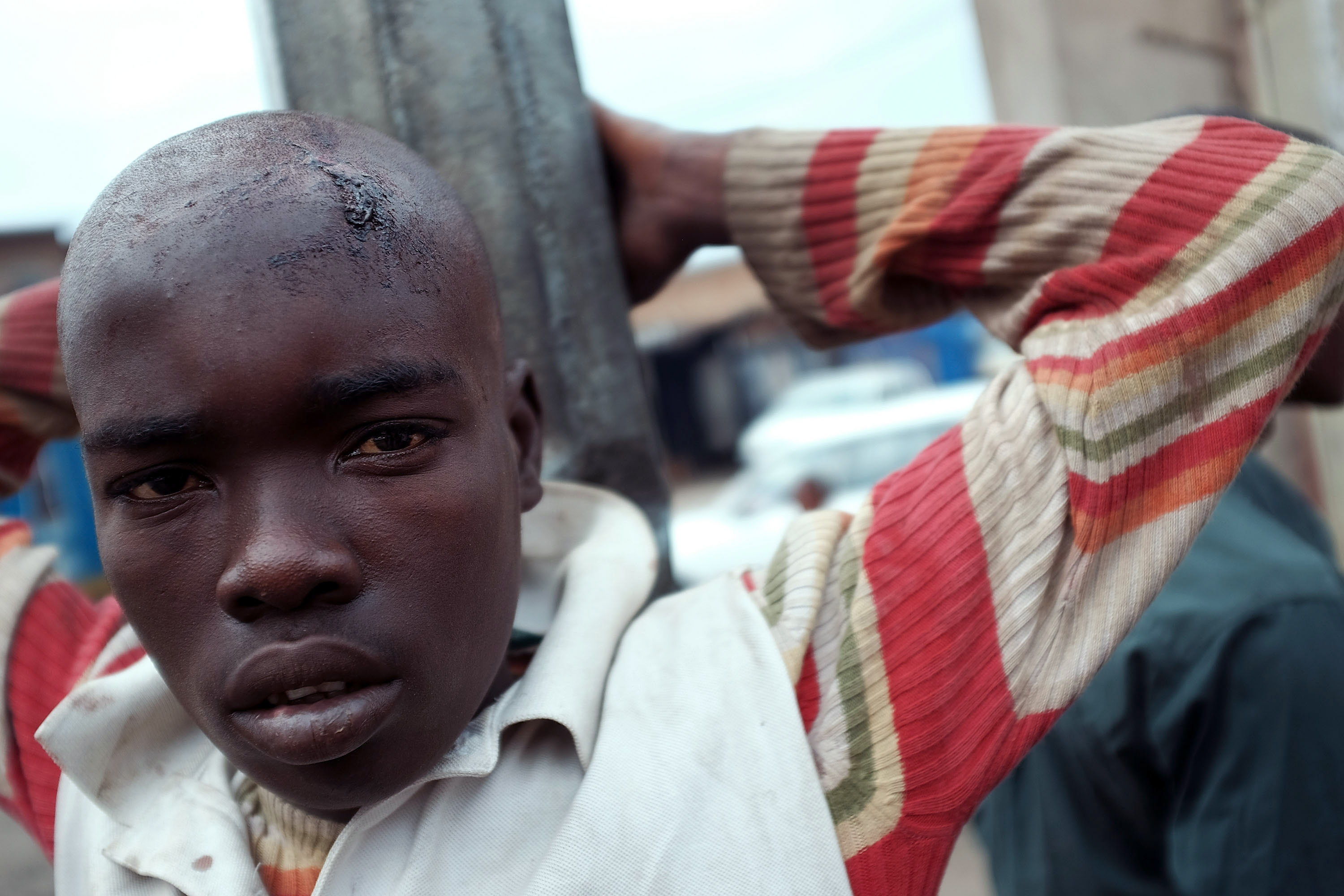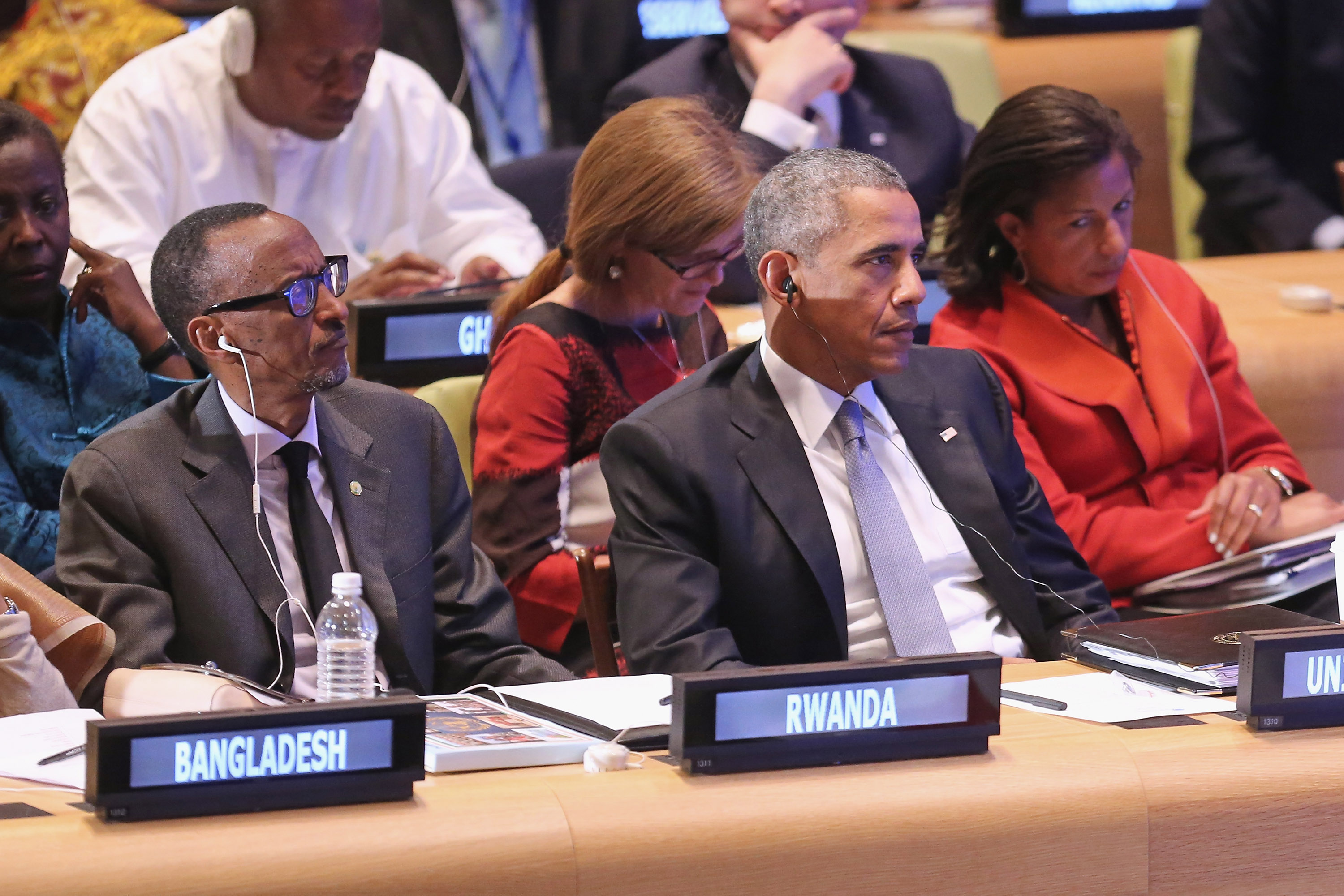The election of Pierre Nkurunziza by parliamentarians in 2005 was one of the final steps in a peace process intended to end a 12-year conflict between Hutus and Tutsis. But more than 15 years on, Burundi looks like it is again on the verge of civil war.
Since April 2015, more than 400 people have been killed in Burundi. Some 3,500 have been arrested. And more than 240,000 have fled to neighbouring countries.
As the South African president, Jacob Zuma, lands in Burundi as head of the Africa Union (AU) high-level panel, we look at the crisis he’s tasked with helping to solve.
So what are the causes? Why is it so worrying? And what are its implications?
In April 2015, President Pierre Nkurunziza decided to run for a third term in office.
The crisis was sparked by the decision of the leader of the ruling party CNDD-FDD, President Pierre Nkurunziza last April to run for a third term in office. Civil society and opposition actors considered this unconstitutional and in violation of the Arusha peace deal which ended the civil war 15 years ago.
On 21 July 2015, Nkurunziza ran for a third term. The opposition boycotted the vote, and he won re-election.
Youth unemployment, corruption and human rights abuses have caused anger and frustration amongst voters, particularly in urban areas.
This has helped civil society and opposition leaders call their supporters to take to the streets to protest against the third mandate.
Security services have brutally repressed the opposition. This has made things worse.
The brutal repression of protests by police and security services has led to a radicalisation of the anti-third term movement. Protesters have picked up weapons, mostly AK-47s and grenades, to defend themselves from police raids in opposition neighbourhoods. They have also been launching attacks on government forces.
Violence and unrest has mostly taken place in Burundi’s capital Bujumbura.
It has mostly occurred in opposition strongholds such as Musaga, Nyakabiga, Jabe and Cibitoke. Almost every night, these former protest flash points are rocked by gunshots and grenade explosions.
Although fighting has been spreading to other provinces of the country, the government retains support in rural areas. But the mass exodus of Burundians from all parts of the country indicates continued insecurity
Burundi’s government claims that accusations of killings, torture and arbitrary detentions are part of an international conspiracy campaign led by Belgium, Rwanda and the United States to promote regime change.
Burundi accuses the Rwandan government of supporting insurgent groups to topple the government. However Rwanda as well as Burundian opposition and civil society groups argue that this is an attempt to shift blame and attention away from the government.
There was a failed coup d’état in May 2015: renegade generals led by Godefroid Niyombare declared President Nkurunziza was deposed. But the coup was thwarted two days later by loyalist forces.
The coup attempt, and its failure, only exacerbated tensions and made the security situation more unstable. It resulted in more arrests and violence against civilians by the government – as well as more reprisal attacks by armed opposition movements.
In the past six months, rebels groups have emerged in the country amid an uncertain situation within the army. Niyombare, who headed the coup, has become the head of a newly created armed group, the Republican Forces of Burundi (Forebu).
The army, Burundi’s National Defence Force, was considered the most neutral actor since the beginning of the crisis, in part because of its integrated character following the civil war. But it is experiencing more defections and increasingly apparent divisions.
The shutting down of independent press and the resulting media blackout has fuelled the spread of often unverified information on social media. This has lead to an increasing sense of fear and panic.
The failed coup episode has also left independent press in shambles. A radio considered close to the ruling party has been burned by coup plotters, while government forces have destroyed the offices of the four leading independent media houses: African Public Radio, Radio-Télé Renaissance, Radio Isanganiro and Bonesha FM. Executives and journalists from these organisations have been forced to flee, some sentenced in exile to complicity in the coup d’état.

Following an agreement, the government has announced that Rema FM (the radio station which is close to the ruling party) and Radio Isanganiro will start broadcasting again. But it remains to be seen if this will lead to more independent reporting given the pressure journalists have faced since the beginning of the crisis.
Anti-third term civil society activists argue that the majority Hutu government, to stay in power, is trying to scapegoat the Tutsi minority by claiming there is a Tutsi conspiracy to return to power.
On December 12, 2015, between 100 and 200 innocent civilians were massacred in opposition neighbourhoods of the capital by security forces, following a series of coordinated attacks on military camps by a rebel group.
Some were buried in mass graves, according to rights groups. Extrajudicial killings, arrests and rapes are reported frequently in Bujumbura, and there are indications that targeted youth belong disproportionately to the Tutsi minority ethnic group. But the number of deaths in both communities is rising.

The ruling party, CNDD-FDD, is a historically Hutu movement. It was formerly a rebel group which fought the Tutsi-led army and government in the 1990s civil war.
Protests were not mono-ethnic from the start, with the participation of Hutu opposition youth, but these developments – combined with increasingly incendiary rhetoric from the ruling party – have stoked fears that the conflict might turn ethnic.
Following talks with UN chief Ban Ki-moon in Bujumbura, Nkurunziza has said he will release 2,000 prisoners and has promised inclusive dialogue with the opposition.
But the communications advisor at the Presidency, Willy Nyamitwe, said that the opposition platform in exile, CNARED (National Council for the Restoration of Arusha and the Rule of Law), cannot participate in such talks.
The UN Security Council, with France leading efforts, is currently discussing a possible UN police force. But the government has said it will oppose it.
Following the December massacre, the AU has proposed to send peacekeepers to the country. But the Burundian government has rejected this proposal.
Amid generally slow and ineffective international response, the AU has proved to be the most incisive and willing organisation in resolving the crisis.
Following the December massacre, it has proposed to send peacekeepers to the country to act as buffer between police and armed opposition groups, protect civilians and stop the conflict from getting worse. But the Burundian government has rejected this proposal, saying that the country is ‘calm’ and that its security forces are in control.
The AU could have deployed troops without the consent of the government, but its determination to stand its ground and protect its sovereignty – despite killings on a daily basis – has mobilised the support of other African heads of state.
South African president, and chair of the AU high-level panel formed to help resolve the crisis, Jacob Zuma landed in Burundi on Thursday February 25 with the leaders of Mauritania, Senegal, Gabon and Ethiopia.



